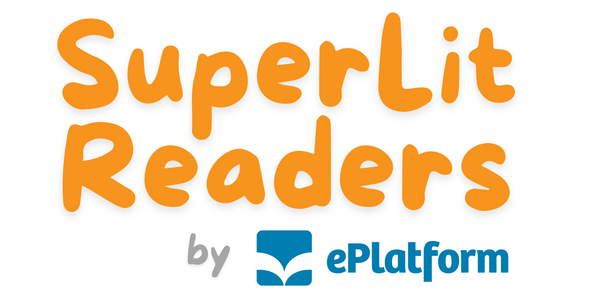When and How to Use Phonics Activities
Ever wondered if you're using phonics activities at the right time or in the right way? You're not alone! Knowing when to pull out that sorting game or how to structure that blending activity can make all the difference between engaged learning and classroom chaos. This guide breaks down exactly when, why, and how to use different phonics activities for maximum impact in New Zealand primary classrooms.

Table of Contents
- Why Timing Matters in Phonics Activities
- Activities for Different Lesson Phases
- When to Use Skill-Specific Activities
- Individual vs. Group vs. Whole Class
- How to Implement Activities Effectively
- Troubleshooting: When Activities Aren't Working
- Your Weekly Planning Guide
- Final Thoughts
Why Timing Matters in Phonics Activities
Here's the thing about phonics activities – they're not just gap-fillers or "fun extras." When used strategically, they're powerful teaching tools that can accelerate learning. When used randomly... well, let's just say you might end up with more confusion than comprehension.
Strategic timing helps you:
- Reinforce new learning: Use activities right after introducing new concepts
- Build automaticity: Practice activities help make skills automatic
- Assess understanding: Activities reveal what students really know
- Re-engage attention: Well-timed activities can rescue a flagging lesson
- Differentiate instruction: Different activities for different needs at different times
The key? Matching the right activity to the right moment and the right purpose — especially in diverse Australian classrooms..
Activities for Different Lesson Phases
Warm-Up Activities (2-3 minutes)
When to use: Start of phonics lesson or after transitions
Best activities:
- Quick sound drills with flashcards
- Sound sorting games
- Rhythm and clapping activities
- "I Spy" with phonics sounds
Why they work: These activities get everyone focused, review previous learning, and create momentum for new instruction.
Introduction Activities (3-5 minutes)
When to use: When introducing new sounds or patterns
Best activities:
- Sound discovery games
- Picture sorts for new phonemes
- Sound-symbol matching
- Listening activities
Why they work: They help students notice and isolate new sounds before formal instruction begins.
Practice Activities (5-8 minutes)
When to use: After explicit instruction, during guided practice
Best activities:
- Word building with letter tiles
- Blending and segmenting games
- Phonics board games
- Partner reading activities
Why they work: Students get hands-on practice with new skills while you provide immediate feedback and support.
Application Activities (8-10 minutes)
When to use: When students are ready to apply skills in context
Best activities:
- Decodable text reading
- Word hunts in books
- Writing activities using target sounds
- Real-word sorting
Why they work: Students see how their phonics skills transfer to actual reading and writing.
Review Activities (2-3 minutes)
When to use: End of lesson or before transitions
Best activities:
- Quick assessment games
- Exit tickets with phonics focus
- Choral reading
- "Show me" activities
Why they work: They consolidate learning and give you quick feedback on student understanding.
When to Use Skill-Specific Activities
Sound Recognition Activities
When to use:
- When introducing new phonemes
- With students who confuse similar sounds
- As warm-up for blending activities
- During intervention for struggling readers
Examples: Sound boxes, listening games, sound-picture matching
Blending Activities
When to use:
- After students know individual sounds
- Before reading decodable texts
- When students are sounding out but not blending
- As daily practice for building fluency
Examples: Sound slides, blending boards, "Robot Talk" games
Segmenting Activities
When to use:
- To support spelling instruction
- When students are ready for phonemic awareness
- Before writing activities
- As assessment of sound knowledge
Examples: Sound counting, Elkonin boxes, "Stretch and Count"
Word Building Activities
When to use:
- To reinforce sound-symbol connections
- When introducing new spelling patterns
- For students who need hands-on practice
- During small group instruction
Examples: Letter tiles, magnetic letters, word ladders
Individual vs. Group vs. Whole Class
Whole Class Activities
When to use:
- Introducing new concepts to everyone
- Review activities most students need
- High-energy games to build excitement
- Assessment activities for quick checks
Best for: Sound drills, choral reading, movement games, quick sorts
Small Group Activities
When to use:
- Targeted instruction for specific needs
- More intensive practice opportunities
- When students need different levels of support
- Assessment and progress monitoring
Best for: Word building, guided reading, skill-specific games, intervention
Individual Activities
When to use:
- Independent practice time
- Assessment of individual progress
- When students work at very different paces
- Homework or take-home practice
Best for: Worksheets, digital games, reading practice, self-assessment
How to Implement Activities Effectively
The Setup Phase
Before you start:
- Have all materials ready and accessible
- Know your objective clearly
- Plan for different completion times
- Think through potential challenges
The Launch Phase
Give clear instructions:
- Demonstrate the activity first
- Check for understanding before releasing students
- Set clear expectations for behaviour and outcomes
- Establish signals for attention and transitions
The Monitoring Phase
While students work:
- Circulate and observe student performance
- Provide immediate feedback and correction
- Note who needs additional support
- Keep activities moving at appropriate pace
The Wrap-Up Phase
Before moving on:
- Bring closure to the activity
- Highlight key learning points
- Address any misconceptions
- Connect to upcoming learning
Troubleshooting: When Activities Aren't Working
Activity Is Too Easy
Signs: Students finish quickly, look bored, or get silly
Solutions:
- Add complexity or extension challenges
- Move to more advanced activities
- Have students teach or help others
- Increase the pace
Activity Is Too Hard
Signs: Students look confused, make lots of errors, or give up
Solutions:
- Break activity into smaller steps
- Provide more modelling and support
- Review prerequisite skills first
- Switch to simpler version
Activity Drags On Too Long
Signs: Attention wanes, behaviour issues increase, learning decreases
Solutions:
- Set clear time limits
- Have a transition plan ready
- Break long activities into chunks
- Build in movement or variety
Activity Doesn't Match Learning Goal
Signs: Students practice wrong skills or miss the point
Solutions:
- Clarify the objective before starting
- Choose activities that directly support your goal
- Modify activities to better align
- Have backup activities ready
Your Weekly Planning Guide
Monday: Introduction and Assessment
- Use diagnostic activities to see what students remember
- Introduce new sounds or patterns with discovery activities
- Plan for review of weekend learning loss
Tuesday-Wednesday: Practice and Application
- Use hands-on practice activities for new learning
- Implement application activities with decodable texts
- Focus on skill-building games and exercises
Thursday: Integration and Extension
- Use activities that combine multiple skills
- Provide extension activities for advanced students
- Focus on real-world application
Friday: Review and Celebration
- Use review games and activities
- Assess the week's learning
- Celebrate progress and achievements
Common Activity Timing Mistakes to Avoid
The "Activity for Activity's Sake" Trap
Don't use activities just because they're fun or available. Every activity should have a clear purpose that supports your learning objectives.
The "One Size Fits All" Mistake
What works for one group might not work for another. Be ready to adjust timing, complexity, or format based on your students' needs.
The "Perfect Activity" Myth
No single activity will meet every student's needs. Use a variety of activities and be prepared to differentiate on the fly.
The "Too Much Too Fast" Error
Resist the urge to cram too many activities into one lesson. Quality practice with fewer activities beats rushed practice with many.
Final Thoughts
Using phonics activities effectively in New Zealand classrooms isn't about having the most games or the fanciest materials. It's about understanding your students' needs, matching activities to learning objectives, and timing everything just right.
Remember: the best activity is the one that helps your students learn. Sometimes that's a high-energy game, sometimes it's quiet individual practice, and sometimes it's simply reading a good decodable book together.
Start with your learning goal, consider your students' needs, and choose activities that bridge the gap between the two. With practice, you'll develop an intuitive sense of when and how to use different activities for maximum impact.
📚 Ready to enhance your phonics activities? Explore our activity-rich resource bundles
🎯 Want systematic phonics progression? Download our detailed Scope and Sequence
💡 Looking for more teaching strategies? Browse our blog for expert tips and practical ideas
— Happy Teaching!




